Ultimate Train Travel Guide for Romania
This guide provides all the information you need to know about train travel in Romania, including details about the country’s railway network, international trains and night trains.
Trains in Romania
When you need to travel across Romania, the train is an affordable and comfortable option, even though they may not always be the quickest.
Due to years of underinvestment in the railways and the deterioration of infrastructure, the average train speeds are low.
Even though Romania might not have the most modern rail network, trains can take you to nearly every place of interest, and the connections with neighbouring countries (Serbia excepted) are generally good.
The train also gives you a great insight into the country, as the views from the window over the highly diverse natural landscapes of Romania are often superb.
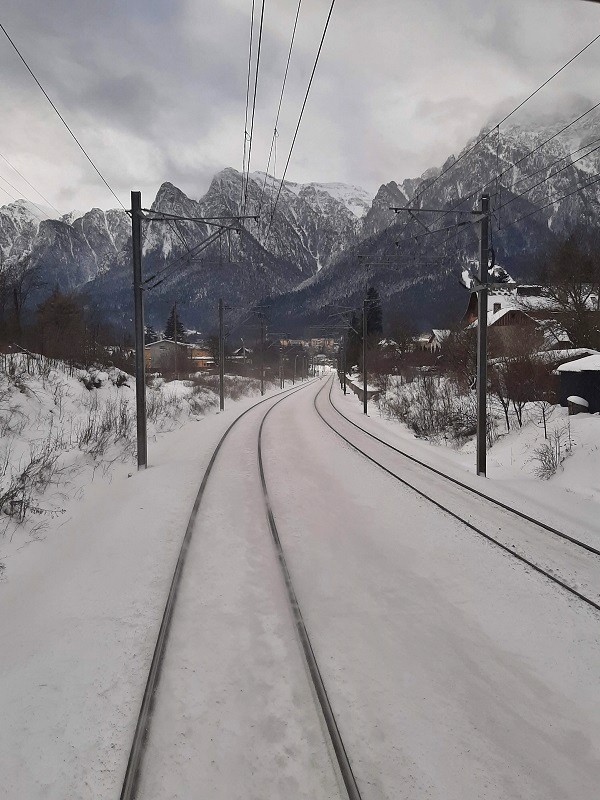
The Romanian railway network
From the big cities such as Bucharest and Cluj-Napoca to Tulcea in the Danube Delta, and from the high Carpathian mountain resorts such as Sinaia and Vatra Dornei to picturesque Transylvanian cities like Sibiu and Brașov, the Romanian railway network covers the entire country.
Although the network is certainly extensive, train services can be scarce outside the main corridors, and it’s not uncommon for some railway lines to see only one or two trains a day.
As Romania is large and average train speeds are slow, it can be time-effective to take a domestic night train when you travel from one side of the country to the other.
Romania is connected by rail to all its neighbouring countries, and you can find more information about international trains in the dedicated chapter further down in this guide.

Train operators
The national train company in Romania is called CFR, which stands for Căile Ferate Române (Romanian Railways).
CFR Călători serves as the passenger transport branch of the Romanian Railways, and they operate the bulk of the train services in the country.
However, there are also a couple of private rail operators that are active in Romania, namely Astra Trans Carpatic, Regio Călători (also known as Regiotrans), Softrans, InterRegional Călători and Transferoviar Călători (TFC).
These companies compete directly with CFR on a few important train routes, such as Bucharest to Brașov.
However, Regio Călători and Transferoviar Călători also operate trains as the sole operator on a couple of branch lines in the country.
While you can certainly use the individual websites of these railway companies to check which stations they serve, it’s easier to utilise the Infofer route planner, as it includes the timetables of all Romanian operators.
You can easily book your ticket either on the individual website of the train operator or directly at the station.
There is no need to print your ticket if you buy it online, simply show the PDF ticket to the conductor (in case you travel with CFR, Astra or Transferoviar) or quote the ticket number in your confirmation e-mail (when travelling with Regio Călători).
If you travel from a station without a ticket office, which is common for smaller rural stations, you can also buy your ticket from the conductor on the train

Train types
Trains in Romania are categorised into five different types, namely:
IC: InterCity
IR: InterRegio
IRN: InterRegio Night
RE: Regio Express
R: Regio
The most premium (and thus the most expensive) train services in Romania are the ones labelled as InterCity (IC) trains, and these trains are the fastest in the country, only stopping at the most important stations.
Following the InterCity trains, InterRegio (IR) trains offer the next best quality, and they are by far the most common long-distance services you’ll come across in the country.
The carriages on these InterRegio trains are often just as comfortable as those on InterCity services, but due to the relatively slower average speed of these trains, they cannot be classified as IC services.
InterRegio Night (IRN) trains belong to the same category as IR trains, with the sole difference being that they also carry sleeper and/or couchette carriages and run overnight.
Even though domestic night trains within Romania are always designated with a train number starting with IRN, international night trains can also be listed as D, IC, EN or NZ category trains (or even without a category indicator) depending on which timetable you consult.
Regio Express (RE) trains offer a level of comfort and speed comparable to IR trains but have tickets with more affordable price.
Seat reservation is compulsory on IC, IR, IRN as well as RE trains and is automatically included in your ticket.
Regio (R) trains are the cheapest of all trains in Romania, but given that they stop at every station on the way they are also the slowest, and the rolling stock used can be highly outdated and uncomfortable.

Ticket prices
In Romania, the price of a train ticket is based on the distance travelled, the category of train you use and travel class.
By western standards, train prices in Romania are highly affordable, as even when you travel from one side of the country to the other on a night train in a private sleeper compartment, you won’t pay more than €70.
For example, travelling with CFR on an InterCity train from Bucharest to Brașov costs 67 RON (€14) in second class and 97 RON (€20) in first class.
However, if you were to travel on an InterRegio train on the same route the price would be 59 RON (€12) and 85 RON (€17) for second and first class respectively, while the same distance on a Regio train would only cost you 31 RON (€6).
If you take a night train, you pay an extra supplement if you want to berth in a couchette or sleeper.
Although a slight discount is given when you book your ticket online in advance, the prices of Romanian train tickets stay the same whether you purchase it in advance or on the day of travel, but it’s important to note that tickets for trains that require reservations can sell out.
Particularly if you travel in Romania in the high summer season, during national or religious holidays (such as Orthodox Easter), or if you want to secure a berth in a couchette or sleeper, it’s advisable to book your train ticket as early in advance as possible.
However, do note that domestic train tickets in Romania become available for purchase only 30 days before the date of travel and thus cannot be booked earlier.

How are Romanian trains like
Most trains in Romania are old-fashioned locomotive-hauled trains, though you will also find some railcars being used.
First class on a Romanian train typically features saloon-style seating in a 1-2 configuration, whereas second class can either have saloon-style seating with two seats on either side of the aisle, or side compartments with 6 seats each.
If you travel with CFR, you have the option to select your precise seat in the carriage if you book your ticket online.
You can expect power sockets at your seat when you travel in an InterCity, InterRegio or InterRegio Night train.
Trains in Romania generally aren’t equipped with Wi-Fi internet, but given the great 4G connectivity in the country, you can always use your mobile internet if you have free roaming within the EU.
You’ll find toilets at the far end of each carriage, though their cleanliness can vary, with especially the toilets on lower-quality trains not always being up to standards.



Dining cars on Romanian trains
With the exception of domestic InterCity trains and a few international night trains, trains in Romania don’t feature dining cars and lack catering facilities such as refreshment trolleys.
The dining car on InterCity trains, which is essentially a bistro point with a few barstools that occupies half a carriage, offers basic snacks and drinks, including alcohol.
A similar bistro point can be found on the international ‘Dacia’ night train that connects Vienna with Bucharest, although it’s generally only attached to this train on Romanian soil.
However, based on my experience, I wouldn’t depend on this Romanian dining car, as about 50% of the time I’ve been on the Dacia or InterCity trains in Romania, the dining car isn’t staffed and is therefore closed.
If you find it open, be sure to have cash with you (Romanian lei or euro on international trains, lei only on domestic trains), as card payments are not accepted.
In any case, you are strongly advised to pack plenty of drinks and snacks with you when you take a train journey in Romania.
For additional information about dining cars on other international trains to and from Romania, please read the chapter about international train connections a bit further down in this guide.

How are Romanian night trains like
Nearly all night trains in Romania are managed by the national rail company CFR, with the exception of some international sleeper trains operated by foreign railway companies and one domestic night train operated by the private company Astra Trans Carpatic on the Arad-Timișoara-Bucharest route.
In Romania, night trains typically provide seating in 2nd class seats, 6-berth and 4-berth couchette compartments, as well as sleeper compartments.
Sleeper compartments generally sleep two people and can also be booked for single occupancy.
National train company CFR has quite a diverse array of sleeper wagons, ranging from older sleepers from the 1980s with lots of wooden finishes that invoke some kind of old Orient Express-like charm, to more modern carriages.
Bedding is supplied in both couchettes and sleepers, and in the latter category you’ll also receive bottled water and a basic amenity kit containing a toothbrush, toothpaste, soap, and wipes.
You’ll always find a washbasin inside your sleeper compartment, and if you travel on an international night train operated by CFR, you might be fortunate enough to be assigned an en-suite compartment with a toilet and shower.
Since CFR regularly changes the rolling stock at the last minute, these en-suite sleeper compartments cannot be guaranteed, and thus are not available for separate booking as a distinct category, so essentially it really gets down to luck whether you get one or not on your international night train.
If you want to learn more about domestic night trains in Romania, do read my CFR night train review of a journey from Bucharest to Sighetu Marmatiei.
The Astra Trans Carpatic night train has more modern rolling stock, and on this train you can book a ‘lux’ compartment with your private en-suite bathroom with toilet and shower.


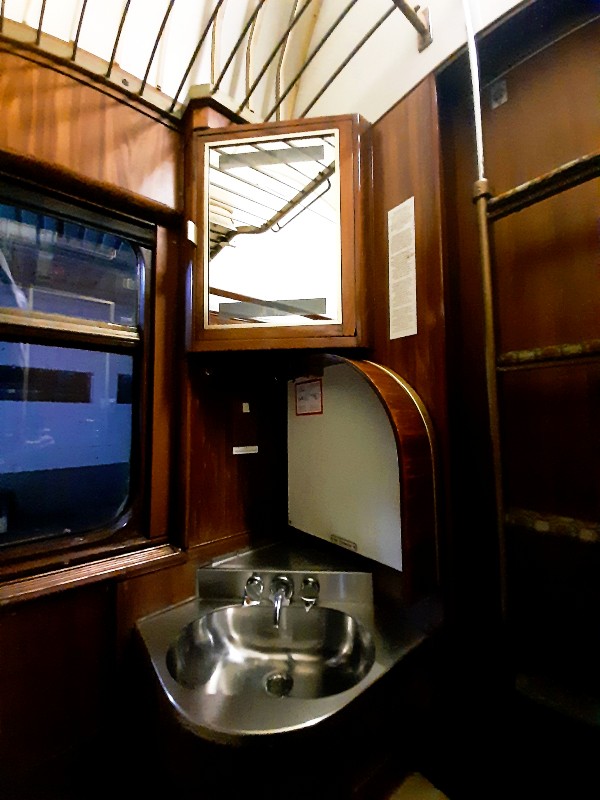

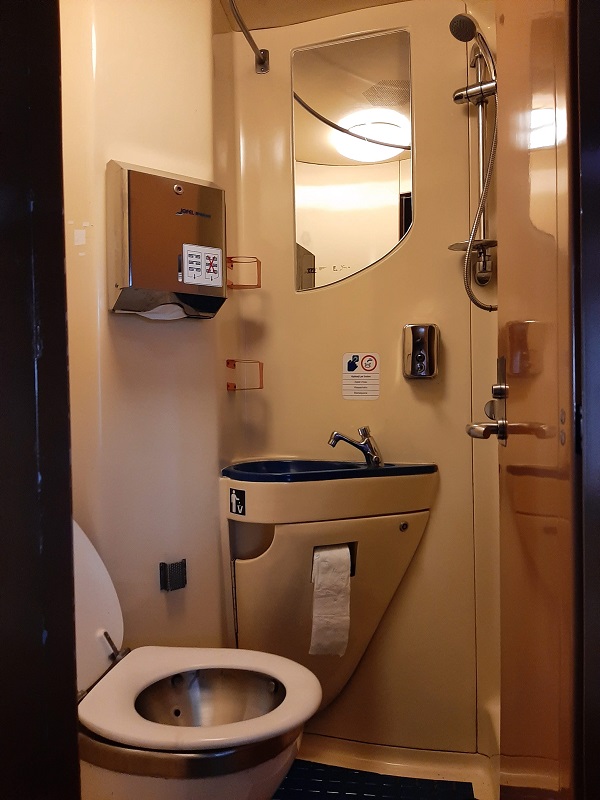

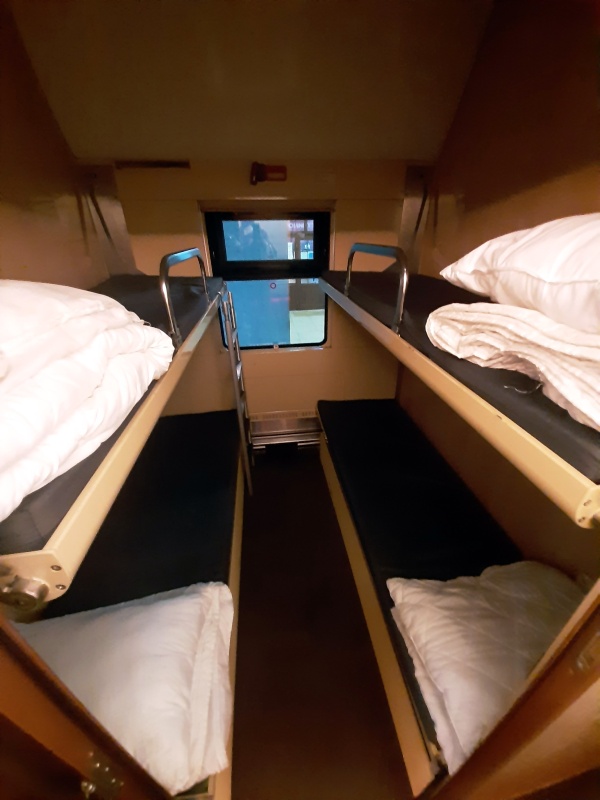

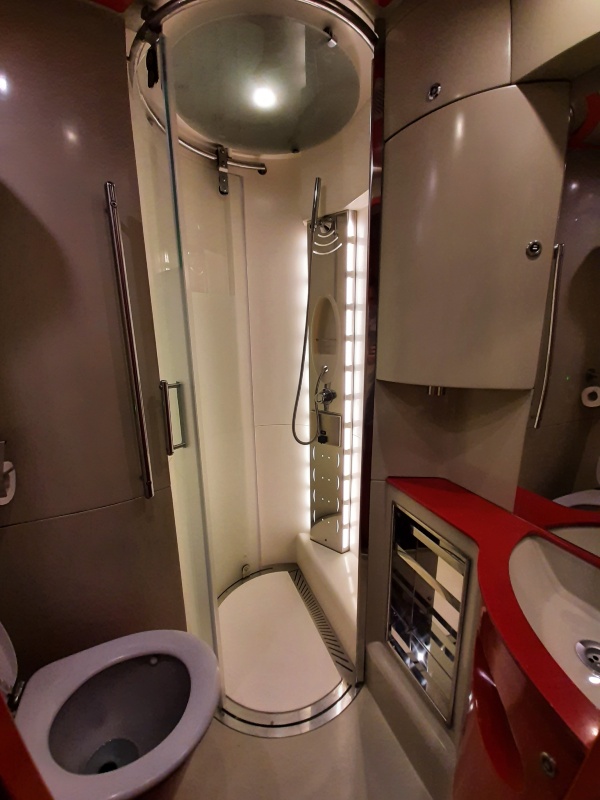
Trenurile Soarelui
Each year in the summer season, national rail company CFR adds extra night trains from destinations all over the country to Constanta and Mangalia on the Romanian coast.
These seasonal trains are referred to as “trenurile soarelui” (trains of the sun) and are extremely popular among Romanian holidaymakers.
During summer, also Astra Trans Carpatic extends their Arad-Timișoara-Bucharest night train to Constanta.

Travelling by train to and from Romania
With some good links to most of its neighbouring countries, it’s easy to travel to and from Romania by train.
It’s entirely feasible to even reach countries further afield from Romania, such as Austria, Germany or Turkey.
The exception to this is Serbia and the rest of the Balkans, as train connections to this part of Europe are poor (and that’s putting it mildly!).
Below, you can see an overview of all the train connections from Romania to its neighbouring countries, including both day trains as well as night trains.

International day trains to Romania
Taking a day train between Romania and one of its neighbouring countries allows you to take in the views from the window, but the travel time can be lengthy.
As usual, the German Railways route planner is the most comprehensive and user-friendly when it comes to looking up international connections within Europe.
Romania to Austria
There are two daytime trains linking Romania with Austria, namely:
– IR143/146: Transilvania train Cluj-Napoca to Vienna, via Oradea, Szolnok, Budapest and Győr.
– IR686/687: Someș train Baia Mare to Vienna, via Satu Mare, Debrecen, Budapest and Győr.
These trains are jointly operated by the Romanian Railways and Hungarian Railways and carriages from both railway companies can be used.
Although the Transilvania and Someș initially operate as separate trains, they are coupled together at the station of Püspökladany in Hungary and travel the last segment to Budapest and Vienna as a single train.
The other way around, the Transilvania and Someș depart Vienna as a single train and is split in Püspökladany, with one part continuing towards Debrecen, Satu Mare and Baie Mare, while the other part continues to Oradea and Cluj.
The Transilvania train has a Hungarian dining car for the entire duration of the ride from Cluj to Vienna.
If you are booked on the Someș train from Baia Mare you can also make use of this dining car between Püspökladany and Vienna.
You can book the Transilvania and Someș trains online on the website of OeBB (Austrian Railways) or the website of the Romanian Railways.
It’s best to book as early in advance as possible to get the cheapest prices.

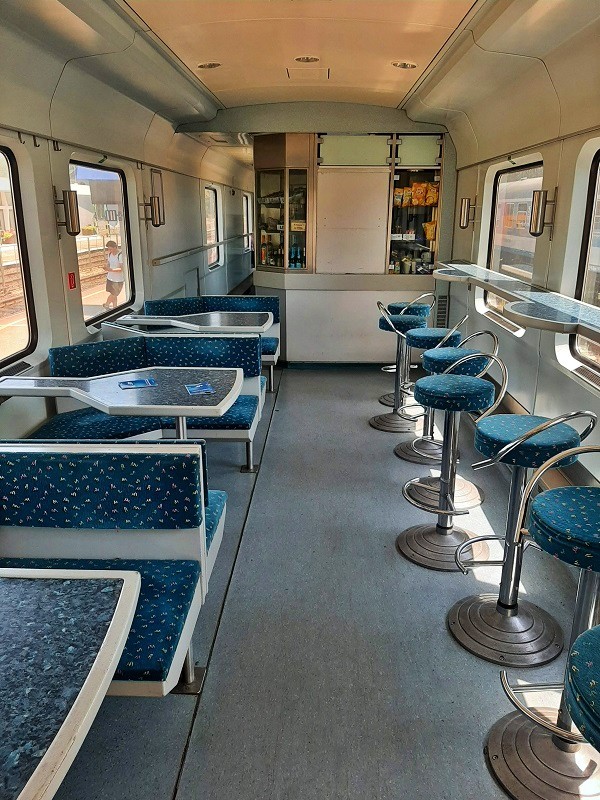

Romania to Bulgaria
The primary railway crossing between Romania and Bulgaria is the Friendship Bridge over the River Danube between Giurgiu and Ruse.
There is just one daily train connection from Bucharest to Ruse over this bridge.
During the summer season, this train usually carries through carriages to Sofia, Veliko Tarnovo and Varna, which are added to separate Bulgarian trains once across the border.
Out of summer, this train from Bucharest to Bulgaria is usually downgraded to a railcar and terminates at Ruse.
However, even if you need to change trains in Ruse, the process is remarkably straightforward since all connections are guaranteed and trains will wait for each other if one is delayed.
You can then travel from Bucharest to Sofia or Varna with an easy change of trains in Ruse, while Veliko Tarnovo will require two changes (in Ruse and Gorna Orjahovica).
There is also a second railway line between Romania and Bulgaria, namely the New Europe Bridge across the Danube between Calafat and Vidin.
A single daily train from Craiova to Vidin goes across this railway border, offering a same-day connection to Sofia in Vidin.
You can purchase your ticket online through the international CFR website, but please note that e-tickets cannot be issued for trains to Bulgaria, and you must pick them up at a Romanian station before departure by quoting your reservation code at a ticket office.
Only the stations listed here can be used for picking up international tickets.
This means that you cannot use the CFR website to buy your train ticket to Romania if you are commencing your journey in Bulgaria.
As the Bulgarian Railways website cannot issue international tickets, you must buy it from the so-called Rila Office for international train bookings, which you can find at the main Bulgarian stations such as Sofia and Ruse.
Don’t worry if you can only buy your ticket a day before departure or even on the same day, as there are usually plenty of empty seats on the trains between Bulgaria and Romania.
Read our guide about trains in Bulgaria if you want to learn more about onward connections in Bulgaria and the railway network of Romania’s southern neighbour.

Romania to Hungary
There are many different daytime trains linking Romania with Hungary, including both long-distance intercity trains as well as local trains.
These daytime trains can include either Romanian (CFR) or Hungarian (MÁV) carriages, both of which provide similar levels of comfort and amenities, such as power sockets.
The most important of the international day trains between Romania and Hungary are:
– IR72/73: Traianus train Bucharest to Budapest, via Craiova, Timișoara, Arad and Szolnok.
– IR74/75: Fagaraș train Brașov to Budapest, via Sibiu, Deva, Arad and Szolnok.
– IR143/146: Transilvania train Cluj-Napoca to Vienna, via Oradea, Szolnok, Budapest and Győr.
– IR366/367: Harghita train Brașov to Budapest, via Miercurea Ciuc, Cluj-Napoca, Oradea and Szolnok.
– IR374/375: Mureș train Targu Mureș to Budapest, via Alba Iulia, Deva, Arad and Szolnok.
– IR686/687: Someș train Baia Mare to Vienna, via Satu Mare, Debrecen, Budapest and Győr.
These trains are complemented by multiple IR/IC trains linking Arad with Budapest (via the Curtici-Lököshaza border), which means that there is now a train between these cities every two hours during daytime hours.
All these trains are jointly operated by Hungarian and Romanian Railways, and can feature carriages from either company.
The Transilvania train has a Hungarian dining car for the entire route, while the Someș train has a dining car only between Püspökladany and Vienna – see the ‘Romania to Austria’ paragraph above for more details about it.
Keep in mind that some of the trains mentioned above may be redirected through an alternative border crossing due to track maintenance works along the railway line, in which case they often get a different train number assigned.
Apart from the IR trains mentioned above between Hungary and Romania, there are also slower regional services across four different railway borders between the two countries.
These are from north to south:
– Carei-Mateszalka
– Valea lui Mihai-Debrecen
– Oradea-Püspökladany (via the Episcopia Bihor-Biharkeresztes railway border)
– Salonta-Bekescsaba
Tickets for trains from Romania to Hungary (and vice versa) can be booked at the international website of the Romanian Railways, as well as on the booking platform of the Hungarian Railways.
It’s recommended to compare prices on both websites, as they may vary.
When traveling towards Hungary and beyond, it’s recommended to book as early as possible to potentially secure cheaper saver tickets.
Do read our Hungary train travel guide to learn more about the trains and railway network there.

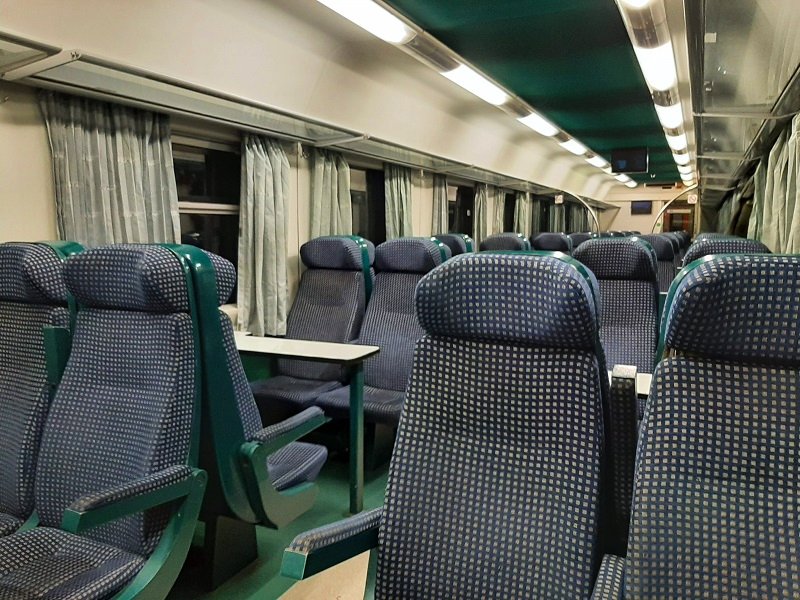
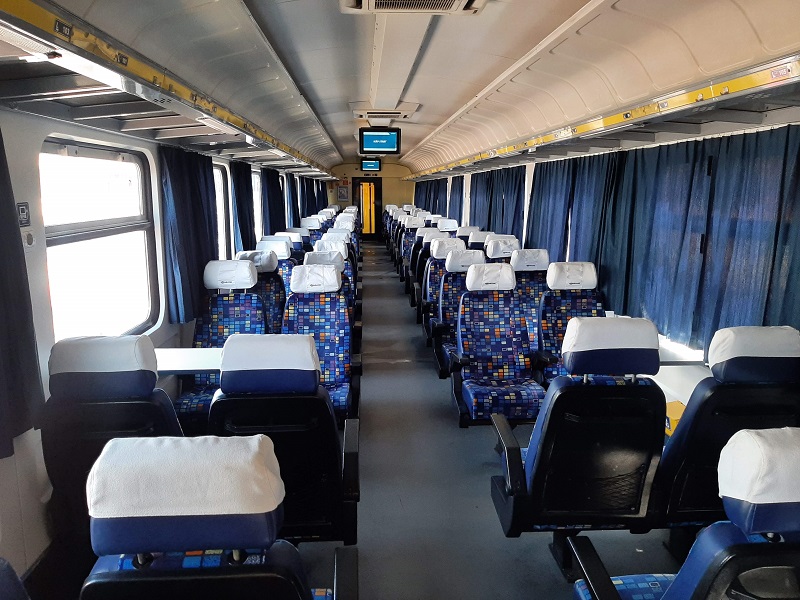
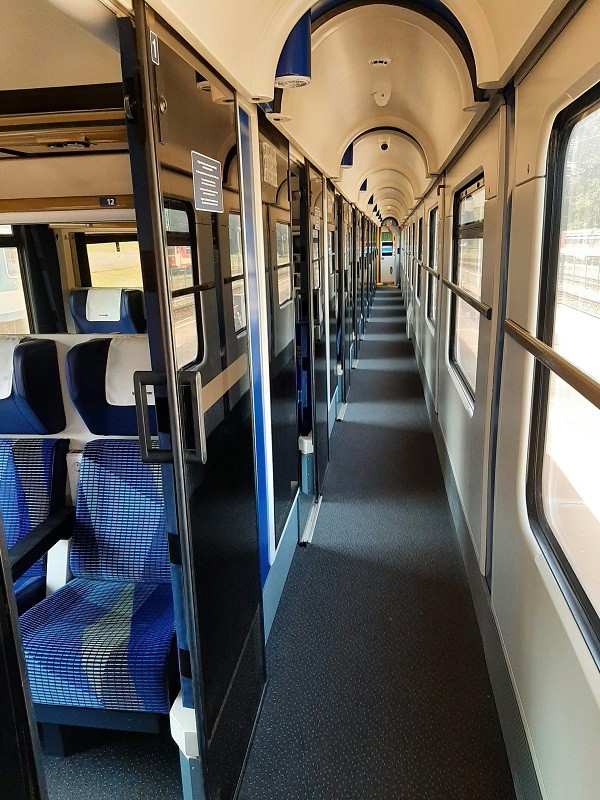
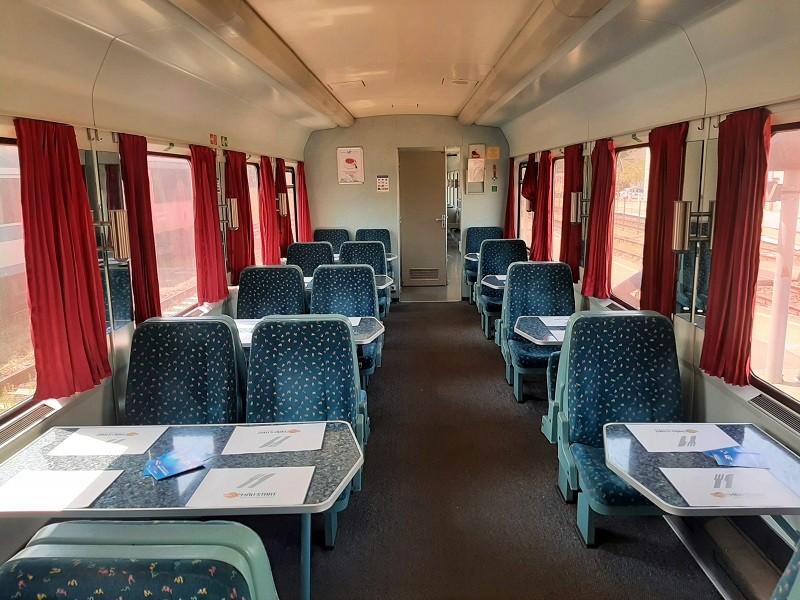
Romania to Moldova
Four daily daytime trains operate between the city of Iași in north-western Romania and Moldova.
From the main station of Iași, there are two daily trains operated by CFR to Ungheni, located just across the border in Moldova.
From the secondary station of Iași Socola, inconveniently located in the outskirts of the city, there are two trains a day operated by the Moldovan Railways (CFM) going all the way to Chisinau via Ungheni.
These CFM trains have a small bistro point from where you can buy basic snacks and drinks (bring Romanian or Moldovan lei cash).
I’ve reviewed the Iași-Chisinau train, so do have a read if you want to learn more about this service.
I also suggest you to read my article about train travel in Moldova if you want to learn more about the railways in that country.
If you are travelling from Bucharest or elsewhere in Romania, you have to take a train to Iași first and change there to another daytime train to Chisinau.
You can buy your ticket online on the website of the Moldovan Railways, and you simply show the e-ticket to the conductor when you board the train.
You can also book your train on the website of the Romanian Railways, but in this case you must pick up your actual ticket from the main station in Iași or one of the few other Romanian stations where you can pick up international tickets.
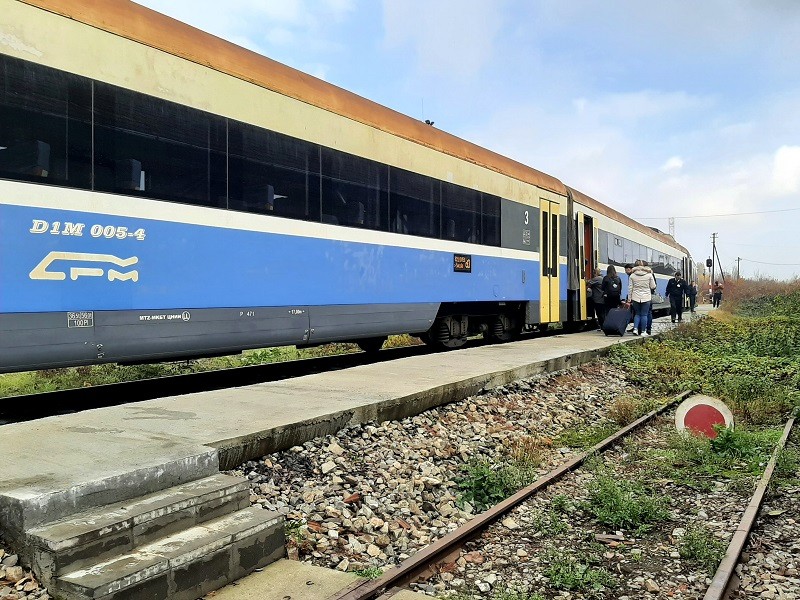
Romania to Serbia
Currently, there is no passenger train traffic between Romania and Serbia.
There used to be daily trains between Timișoara and Belgrade via Vrsac in Serbia, but sadly there is no sign of them resuming at any time in the near future due to the sorry state of the Serbian railways.
To travel between Romania and Serbia by train, the best route is currently via Budapest, Hungary.
Romania to Ukraine
At the moment, there are no direct trains from Romania to Ukraine.
Sadly, passenger train services across the main Romanian-Ukrainian railway border at Vicsani/Vadul-Siret (on the line between Suceava and Chernivtsi) have been long suspended even before the Russian invasion of Ukraine.
In January 2023, a direct train was launched between Valea Viseului and Rakhiv in Ukraine, but this connection has been temporarily suspended.
When trains restart on this railway line, it will make for a great way to travel between the two countries, as Valea Viseului is connected by train to Cluj-Napoca and by night train to Bucharest, while Rakhiv has good onward connections to Ivano-Frankivsk, Lviv and Kyiv.
For the time being, the best option is to travel from Bucharest or Cluj-Napoca by direct train to Sighetu Marmatiei, from where it’s only a short distance walking across the Romanian-Ukrainian border to Solotvyno.
Once in Solotvyno, you can catch a train to Uzhhorod, Lviv and Kyiv.
You can see how easy it is by reading my article about the Sighetu Marmatiei-Solotvyno border.
Book domestic Romanian train tickets through CFR and your connecting Ukrainian train on the Ukrainian Railways website – both are PDF e-tickets which you simply show to the conductor on board.
Alternatively, take a train from Romania to Budapest or Debrecen in Hungary, and catch an onward train from there to destinations in Ukraine, such as Chop, Mukachevo, Lviv, and Kyiv.
Another option to travel from Romania to Ukraine by train is by first taking the train to the Moldovan capital of Chisinau, from where you can take a direct night train to Lviv or Kyiv.
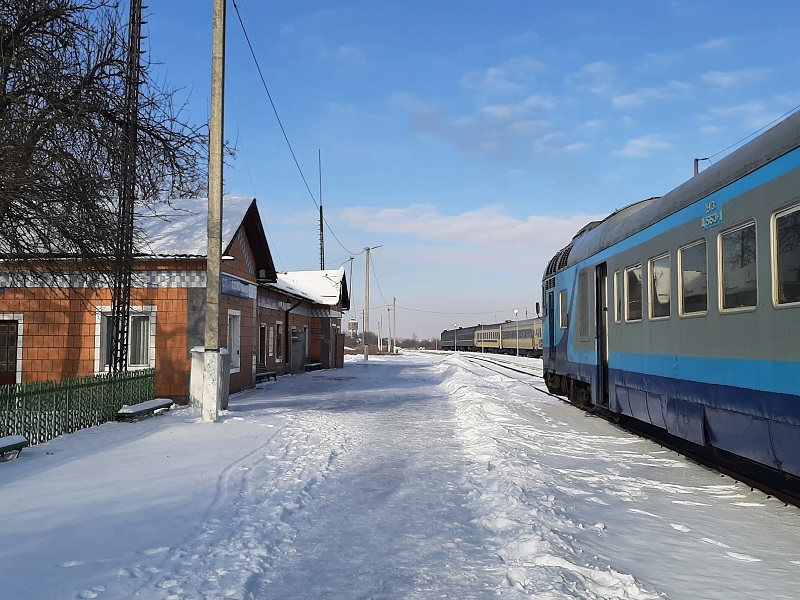
International night trains to Romania
Romania is currently connected to Austria, Hungary, Moldova and Turkey by international night trains.
Below you can see an overview of all international night train connections to/from Romania, their train numbers by which they are listed in the timetables, and other important bits of information you need to know about these trains.
Here is an overview of all international night train connections to and from Romania, including their train numbers as listed in the timetables, along with other essential information you need to know about these trains.
Keep in mind that some of these trains may sometimes take a different route due to track maintenance works along the railway line, in which case the train numbers can differ from the ones listed below.
Romania to Austria
There are currently two different night trains between Romania and Austria, namely:
– D346/347: Dacia night train Bucharest to Vienna, via Brașov, Sighișoara, Alba Iulia, Arad and Budapest.
– D404/405: Corvin night train Cluj-Napoca to Vienna, via Oradea and Budapest.
Both these trains are operated by CFR and have 2nd class seats, couchettes and sleepers available.
While the Dacia and Corvin initially operate as separate trains, they are coupled together in Hungary and travel the last segment into Austria as a single train.
Likewise on the return journey, the combined train departs as one unit but is later divided at the Hungarian station of Szolnok, with one part continuing to Cluj-Napoca and the other to Bucharest.
Between Budapest and Vienna, the combined train is equipped with a proper Hungarian dining car for breakfast in the morning, and on the return journey from the Austrian capital to Romania, a dining car is attached until Budapest for dinner.
Once on Romanian territory, a basic Romanian dining car selling basic snacks and drinks is usually attached to the Dacia night train – make sure you bring euro or lei cash as it does not accept card payments.
You can book the Dacia night train online either on the website of OeBB (Austrian Railways) or the website of the Romanian Railways.
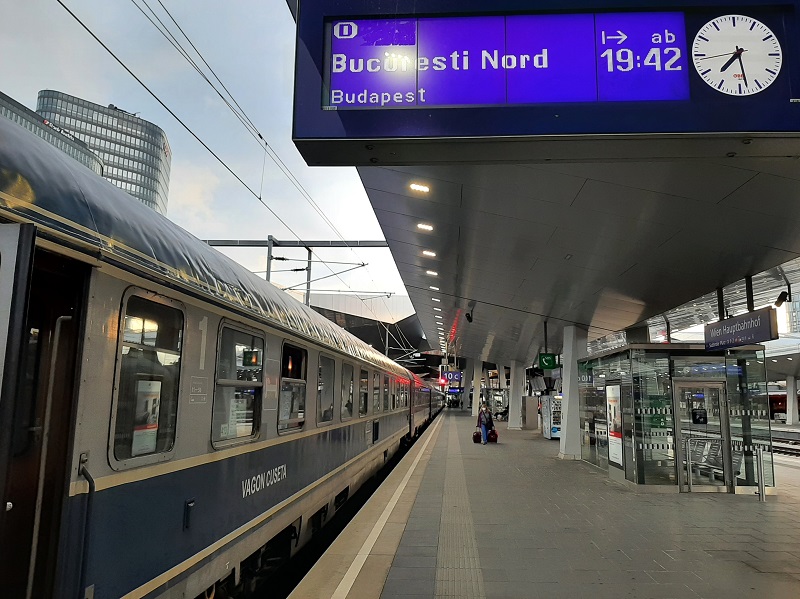
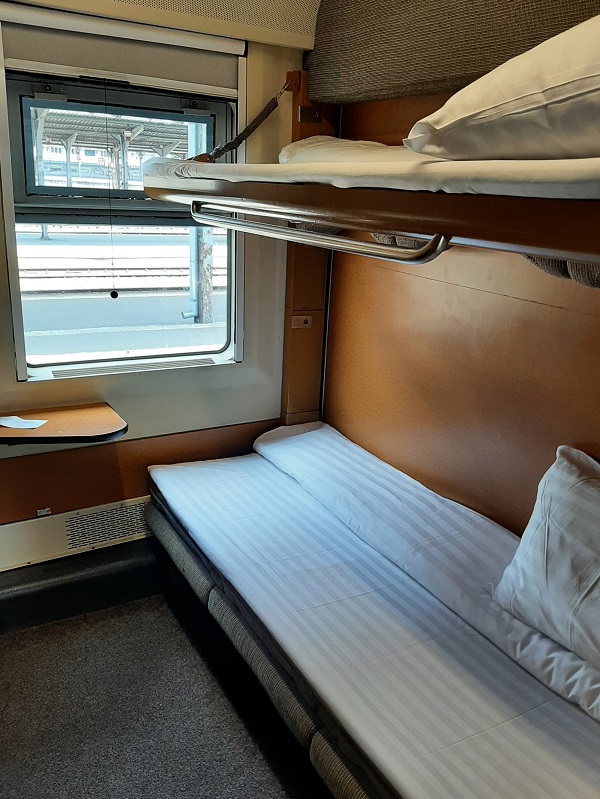


Romania to Hungary
There are two night trains from Bucharest to Budapest as their final destination, as well as a third night train departing from Brașov to Budapest.
These trains are:
– IC78/79: Muntenia night train Bucharest to Budapest, via Craiova, Timișoara and Arad.
– IC406/407: Corona night train Brașov to Budapest, via Miercurea Ciuc, Cluj-Napoca and Oradea.
– IC472/473: Ister night train Bucharest to Budapest, via Brașov, Sibiu, Deva and Arad.
The Corona sleeper train is operated by MÁV (the Hungarian State Railways), while the Ister and Muntenia trains are operated by CFR.
As you can see, these trains follow different routes through Romania on their way to the Hungarian border.
All three of these trains provide 2nd class seats and couchettes, yet only the Corona and Ister trains feature a sleeper carriage as well.
There is no dining car on the Ister and Muntenia trains, but the Corona train does have a Hungarian dining car that operates throughout the entire journey between Brașov and Budapest.
Of course, if you need to travel from Romania to Hungary you can also take the Dacia or Corvin night trains which link Romania with Austria, as both stop at Hungarian stations such as Szolnok, Budapest and Győr along the way.
However, the early arrival hours (or late departure when going from Hungary to Romania) of these trains make them less attractive options compared to the Ister, Muntenia or Corona.
All three trains listed above can be booked at the international website of the Romanian Railways, as well as on the booking platform of the Hungarian Railways.




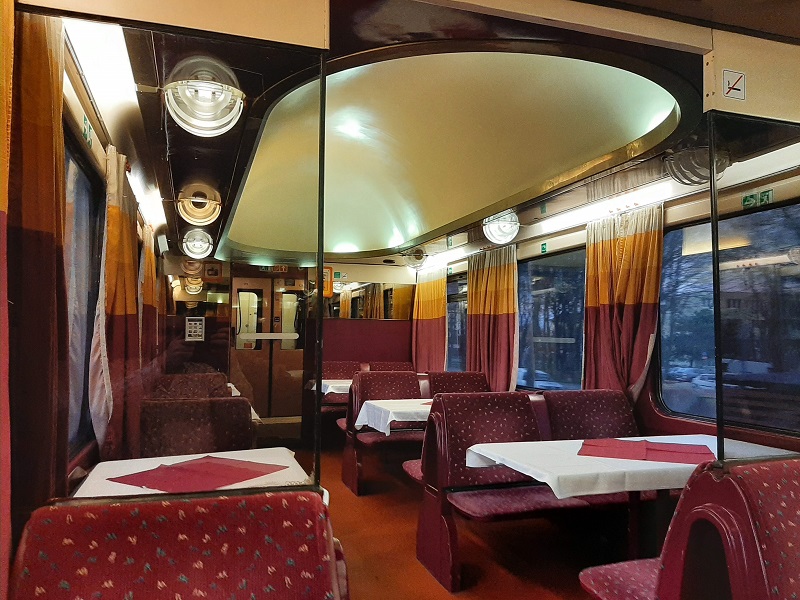
Romania to Moldova
If you want to travel from Romania to Moldova, there is also an excellent night train between Bucharest and Chisinau which you can consider:
– 401/402: Prietenia night train Bucharest to Chisinau, via Ploiești, Buzau, Bacau, Iași and Ungheni.
The Prietenia (Friendship) night train is operated by the Moldovan Railways (CFM) and has 4-berth couchettes and 2-bed sleeper compartments, which can also be booked for sole occupancy.
This night train has a dining car attached for the entire duration of the ride, although it only sells drinks and basic snacks (bring Romanian or Moldovan lei cash, card payments are not accepted).
You can buy your ticket for the Prietenia night train with the Romanian Railways or at the website of the Moldovan Railways.
While the Moldovan Railways offers e-tickets for the train, the Romanian Railways don’t and you still need to collect your real ticket at the station in Bucharest (or one of the few other Romanian stations capable of printing international tickets) by quoting your reservation number to the booking clerk.
If you therefore use the Prietenia night train to travel from Moldova to Romania, you are well-advised to book it on the Moldovan Railways website.
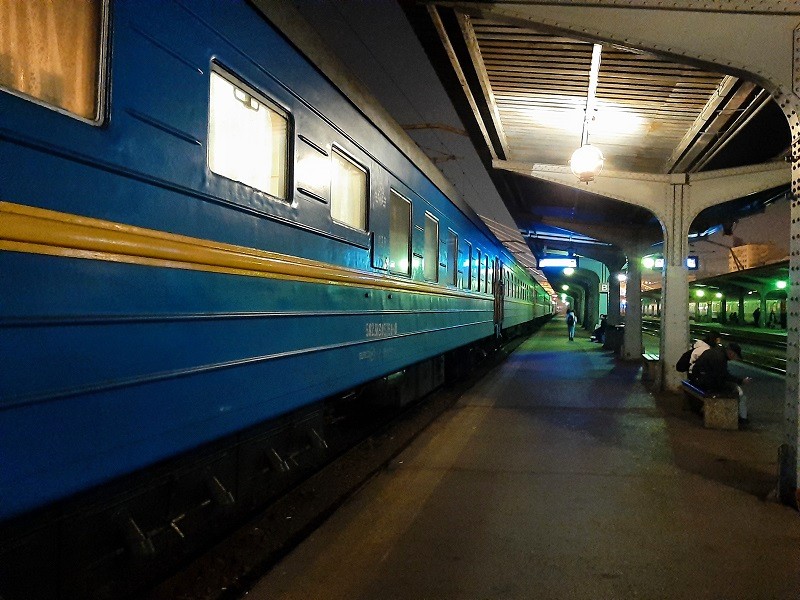
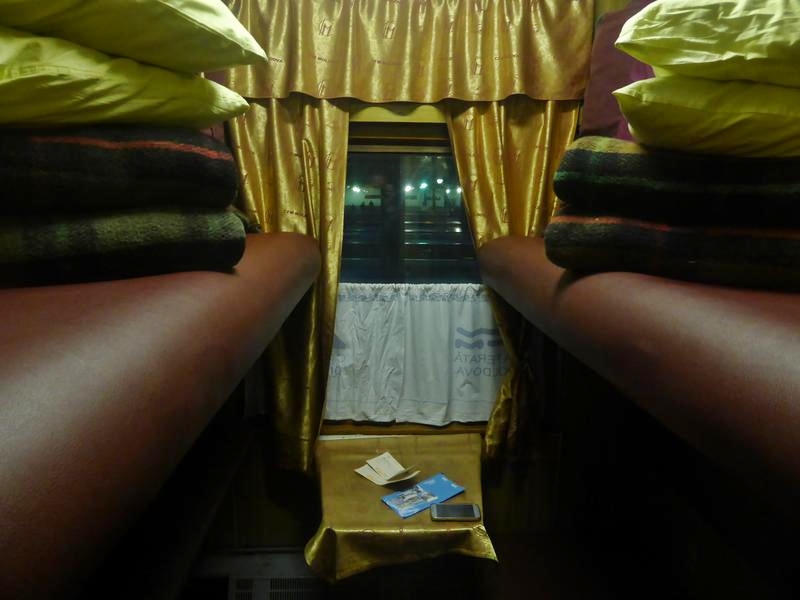

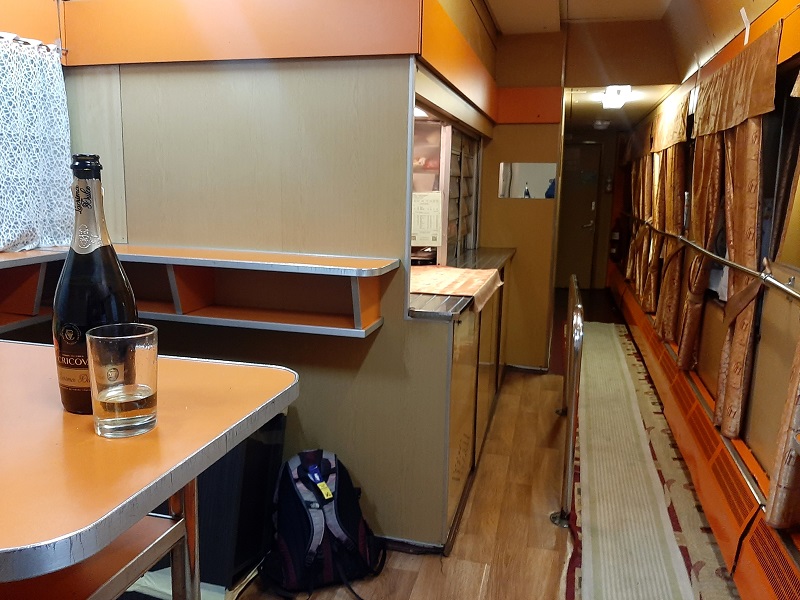
Romania to Turkey
There is a seasonal night train connecting Bucharest with Istanbul:
– 460/461: Bosfor Ekspresi night train Bucharest to Istanbul (Halkali), via Ruse, Veliko Tarnovo, Stara Zagora, Svilengrad, Kapikule and Edirne (seasonal only).
The Bosfor Ekspresi (Bosphorus Express) is operated by the Turkish Railways (TCDD) and generally runs from June until late September or early October.
This trains has a 4-berth couchette car only.
When the seasonal train to Istanbul is not running, you can still reach Turkey by train, although the journey will be a bit more complicated.
You will need to take the daily departure from Bucharest to Ruse in Bulgaria, switch trains to Gorna Orjahovica, and then change trains again at Gorna Orjahovica to reach Dimitrovgrad.
Once in Dimitrovgrad, you can catch the Sofia-Istanbul night train, which runs year-round and has both 4-berth couchettes and 2-bed sleepers compartment (which can also be booked for sole occupancy).
An easier (and more secure option if you don’t want to risk a misconnection somewhere in Bulgaria) would be to travel first from Bucharest to Sofia with one easy change of trains in Ruse, stay overnight in Sofia, and take the Sofia-Istanbul night train the following day.
You can book the Bucharest-Istanbul night train online on the website of the Romanian Railways – but remember that you have to collect your actual ticket at the international ticket desk of the station in Bucharest, so this is only an option when travelling to Turkey.
Tickets for the Sofia-Istanbul night train or for westbound trains from Turkey to Bulgaria or Romania cannot be booked online.
However, Andy Brabin from the reliable booking agency Discover by Rail can arrange these tickets for a small fee and will deliver them to your hotel in Sofia or Istanbul, or arrange a personal handover at the station.
You can inquire about it by e-mailing Andy at tickets@discoverbyrail.com.
For more information about onward rail connections in Istanbul, read our train travel in Turkey guide.
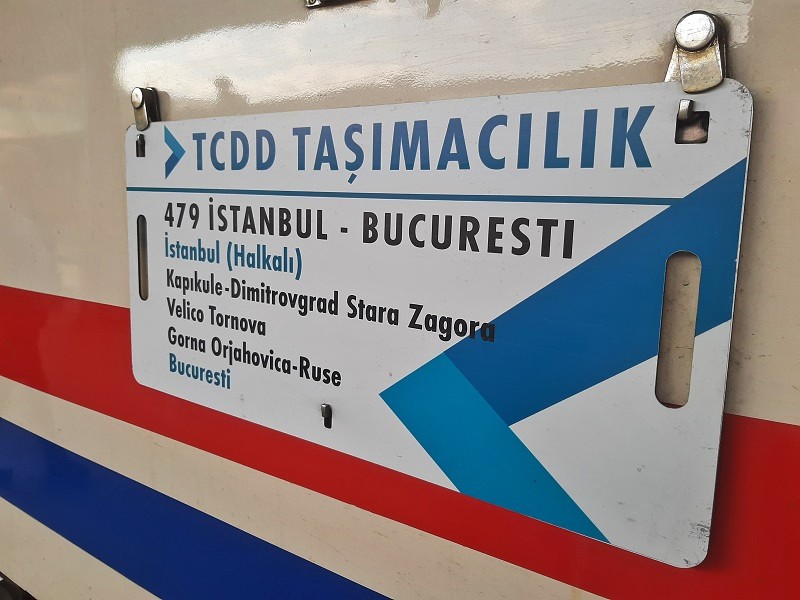
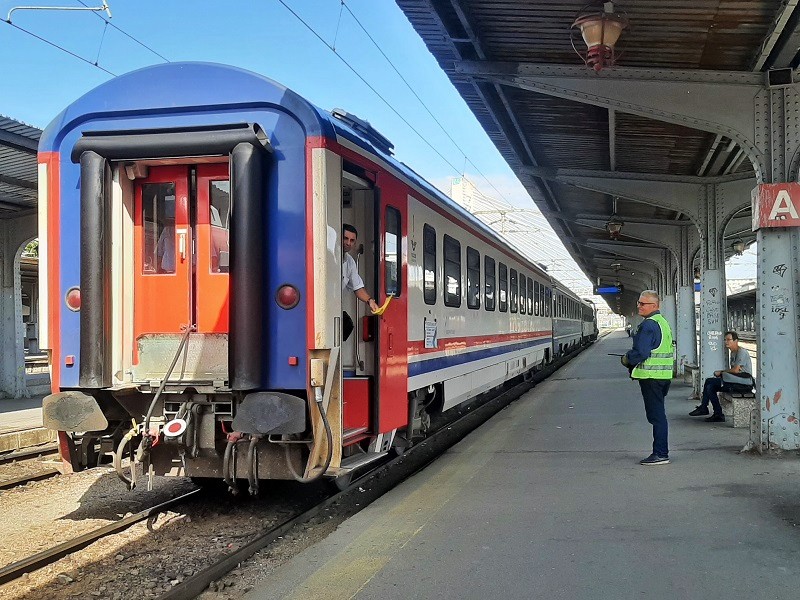
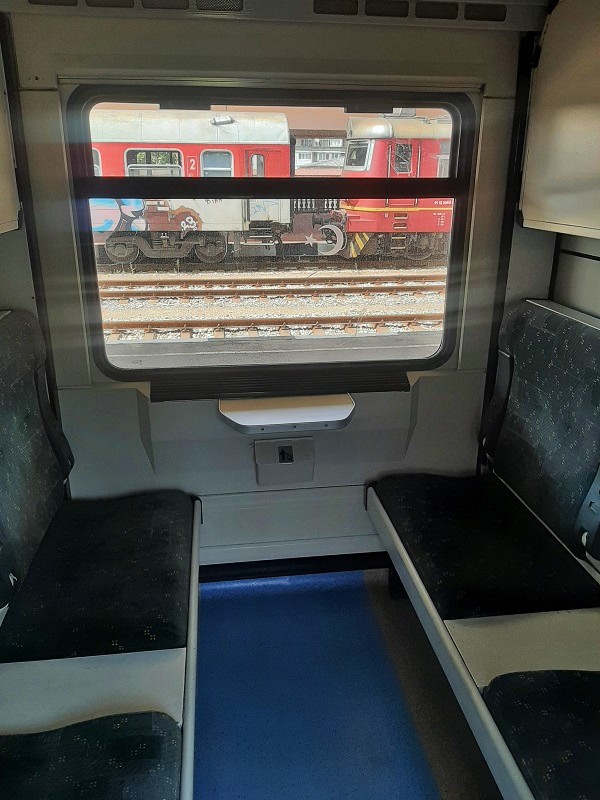
Interrail and Eurail in Romania
Please be aware that your Interrail or Eurail pass is only valid on trains operated by the national operator CFR.
Officially, you will need a seat reservation if you want to take an IC, IR or RE train, which will cost you around €1 for domestic trains and around €3 for most international trains.
The supplements for international night trains vary, ranging from around €20 for a 4-berth couchette to €98 for a single sleeper.
Unfortunately, you can’t make seat reservations for domestic Romanian trains online as an Interrail or Eurail pass holder, and therefore will have to go to the station to do this.
Some Interrail and Eurail seat reservations as well as couchette and sleeper supplements for trains from Austria and Hungary to Romania can be booked online at the website of OeBB or on the website of MÁV.
However, for most journeys in the other direction (from Romania to Hungary or Austria), as well as any train towards Bulgaria or Turkey, you will still need to go to a Romanian ticket office.
You should always ask yourself whether an Interrail or Eurail pass is worth it for travel in Romania given that normal point-to-point train fares are low.
I would advise against buying a One Country Interrail or Eurail Pass for Romania, given that you would need to do some serious long-distance travelling across the country to get the value out of this rail pass.
A Global Interrail or Eurail Pass can be highly advantageous if you value flexibility and if your travels also involve countries with higher train fares, particularly those in Western Europe.
However, I wouldn’t recommend purchasing one if your travel plans primarily cover Eastern Europe.
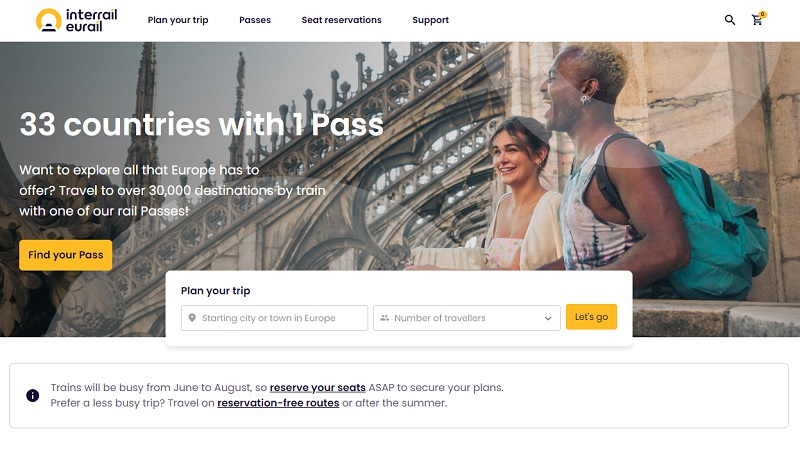
Scenic railway lines in Romania
Travelling by train is also about enjoying the wonderful views from the window – and with an abundance of unspoilt countryside and high mountain ranges this is certainly possible in Romania.
The following scenic railway lines in Romania stand out when it comes to their fine views:
– Brasov to Ploiești
– Miercurea Ciuc to Adjud
– Suceava to Salva
– Sighetu Marmatiei to Salva
– Simeria to Targu Jiu
Besides these railway lines, Oradea to Cluj-Napoca, Brașov to Deva and Brașov to Gheorgheni aren’t bad either.
I also enjoy the stretch of railway line between Drobeta-Turnu Severin and Orșova, as it has some fine views over the Danube.
If you’re a dedicated train enthusiast, it’s a must to travel on the narrow-gauge Mocănița steam railway located in the town of Vișeu de Sus in the beautiful region of Maramureș in northern Romania.
The Oravița-Anina Railway, often referred to as the “Romanian Semmering,” is another scenic train route that’s worth seeking out.
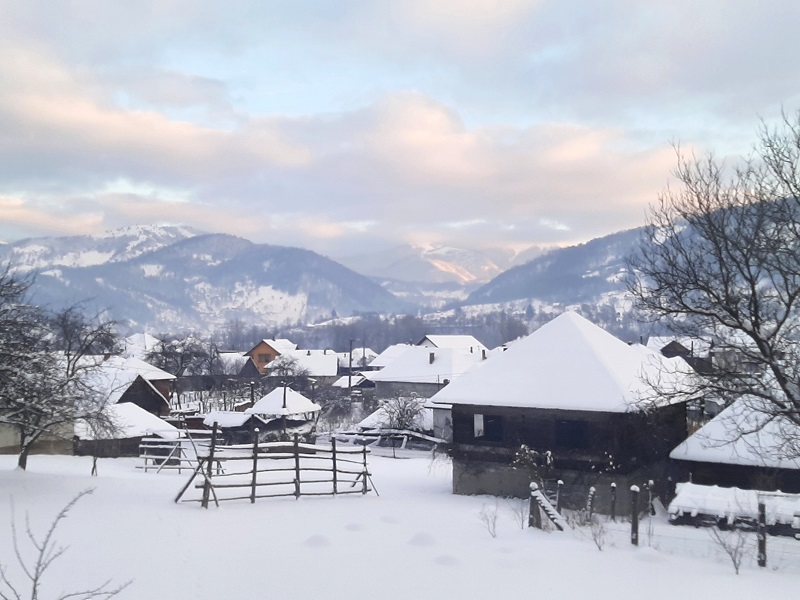
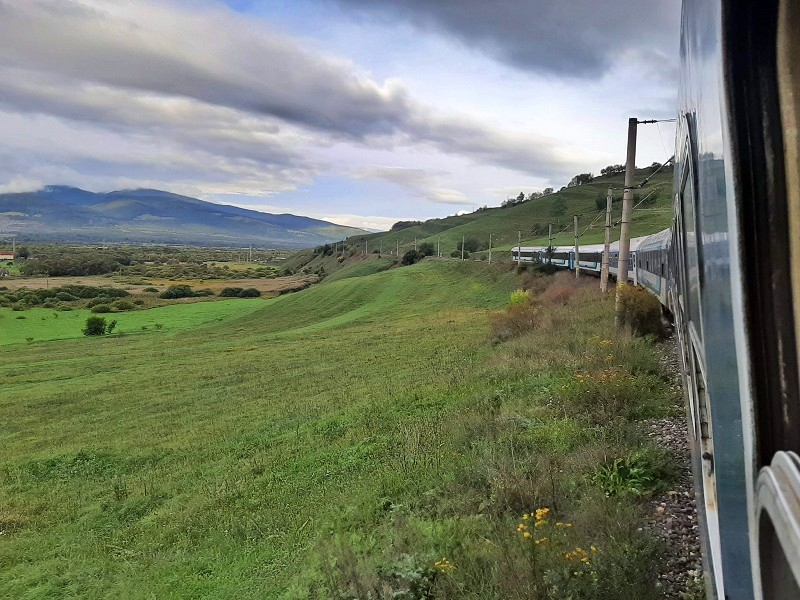



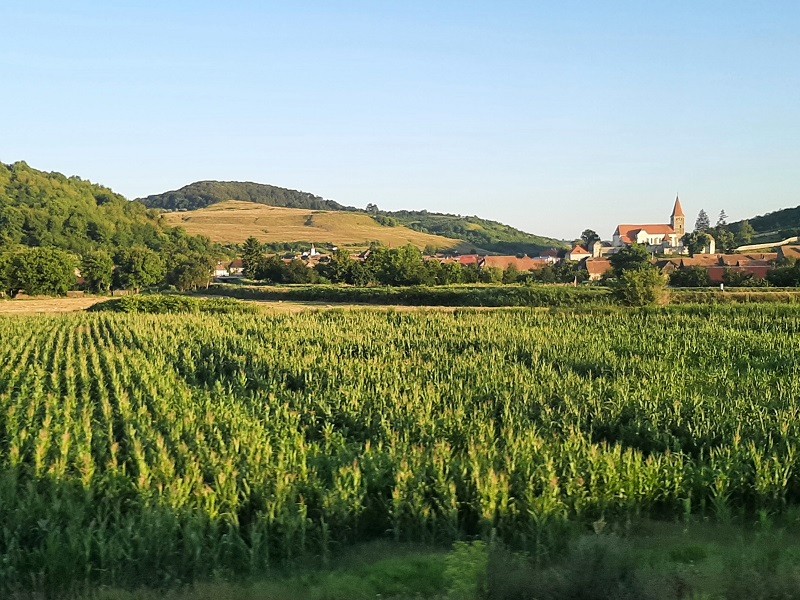

Romanian train stations
Romania does have some beautiful historic train stations, but unfortunately, many of these buildings are in poor condition and not up to modern standards.
With the exception of some recently renovated stations such as Arad, the train stations in Romania aren’t the friendliest of places for travellers with a disability or mobility issues, as platforms can often only be reached by stairs or by crossing the railway tracks.
Even if you have direct access to the platform, you’ll notice that the platforms are not at the same level as the train doors, so you would still need to climb up the steep steps of the train.
Only the biggest stations in Romania such as Bucharest Gara de Nord, Cluj-Napoca, Brasov, Constanta and Oradea have luggage lockers or left luggage facilities.
Stations in larger towns or at important railway junctions have kiosks, bakeries or small supermarkets where you can stock up for the trip.
These stations often have a free Wi-Fi internet network as well.
In larger cities like Bucharest, Cluj-Napoca and Iași, some of the train stations will also feature fast-food and takeaway restaurants.
At most other stations, you might need to take a short walk outside the station, as it’s common to find small supermarkets and some simple restaurants in the immediate vicinity.
Although waiting areas at Romanian train stations can hardly be called comfortable, they provide a shelter from the warm temperatures in summer and are heated in winter.
Train stations in Romania are generally safe.
Even though some Romanian stations might feel a bit unsafe after darkness has fallen as they can attract some homeless people, they are actually quite secure as even the smaller Romanian train stations will have a station master on duty at all times.
However, you are still well-advised to keep a close watch on your personal belongings, especially at larger and more crowded stations such as Bucharest Gara de Nord.

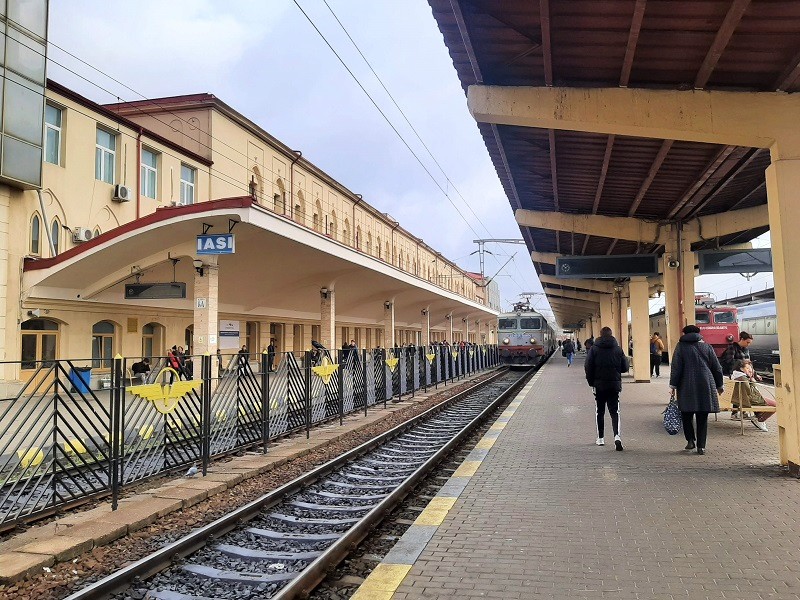

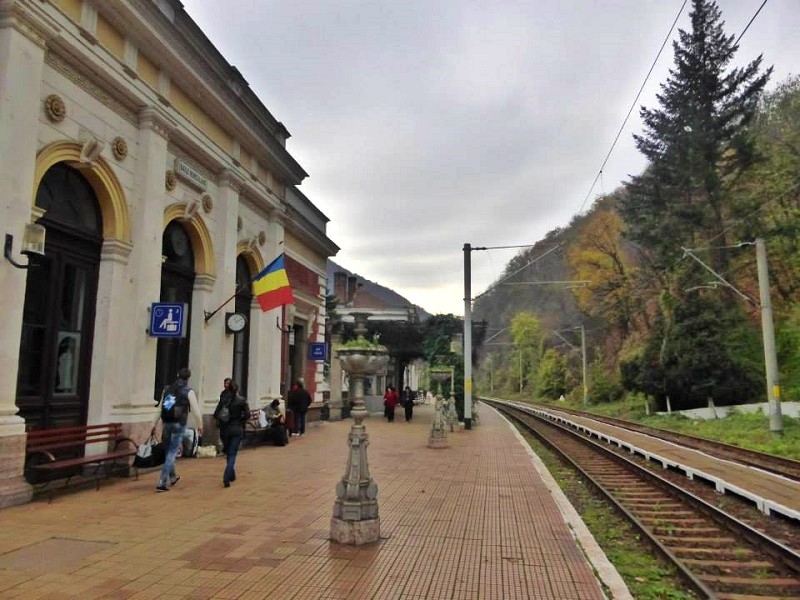
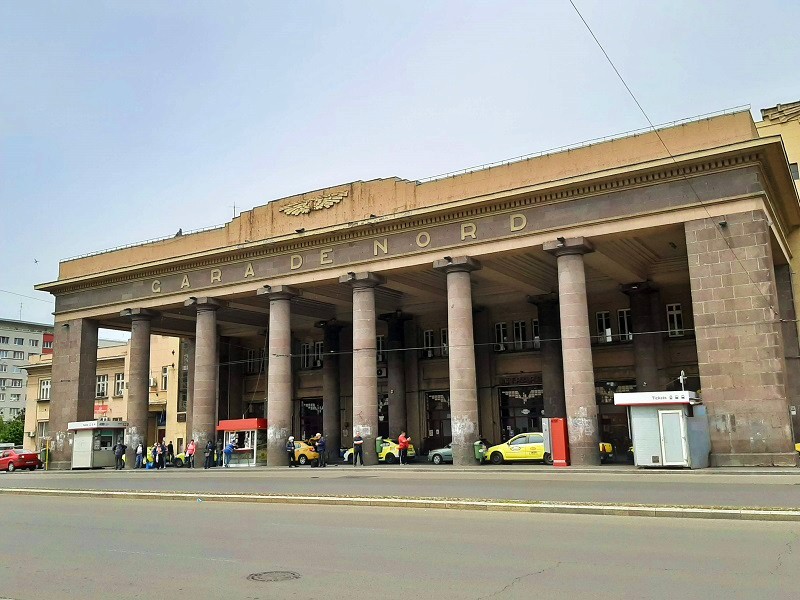



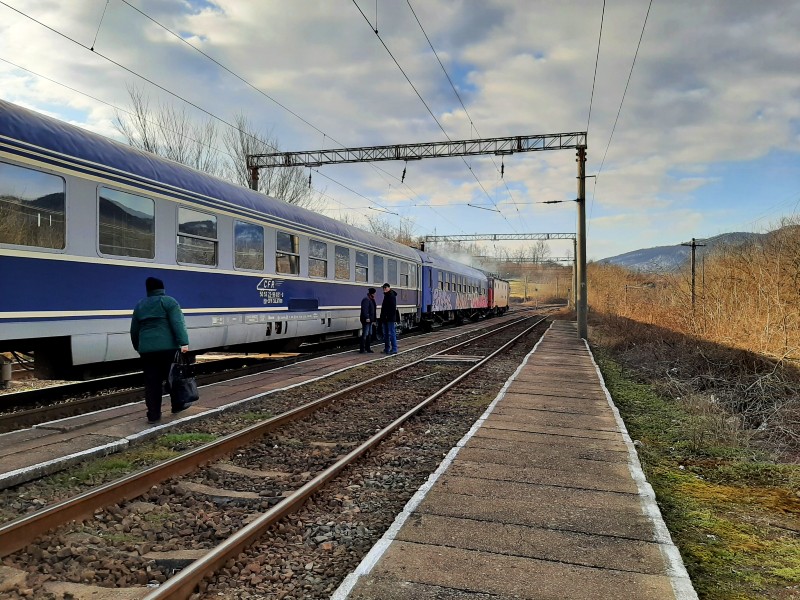
Romania train travel tips
As I live in Romania and travel thousands of miles each year by train in the country, let me give you a couple of general tips which you should really keep in mind.
First and foremost, expect your train to be delayed!
Although travelling by train through the country is generally comfortable and great fun, Romanian trains are prone to breaking down and the condition of the railway tracks aren’t great.
Make sure you enter the train with a sense of adventure and to pack plenty of water and snacks for the ride, and perhaps a couple of beers or a bottle of wine as well.
Most importantly, never plan tight connections in the country, especially not when you need to catch an important flight or night train, and leave at the very least a couple of hours of buffer time if you have an important event to attend.
Especially compared to western European countries, the level of information given on trains is poor (or well, actually non-existent).
Station stops are not announced on the train, so it’s advisable to closely monitor the time and consider using apps like Google Maps to track your journey’s progress and your live location with GPS to ensure you don’t miss your stop.
This is even more important if you need to disembark at an intermediate stop in a rural area where the train might only halt for a few seconds.
Using the Infofer route planner is also highly recommended, as it offers real-time updates on train delays and estimated arrival times, helping you stay informed about your journey’s progress.
On the Infofer website, you can also find a live map showing all passenger trains running across Romania at that moment, including their exact locations and current delays.

Conclusion
With generally comfortable trains and some great views from the window over some highly diverse natural landscapes, train travel in Romania is a real joy.
The Romanian rail network is vast and you can reach almost every corner of the country by train.
Compared to Western Europe, train travel in Romania is budget-friendly, and even opting for a private sleeper compartment on a night train across the country remains remarkably affordable.
Rail connections to neighbouring countries – especially to Hungary – are quite good, making it easy to travel to Romania by train.
There are however some downsides too about Romanian train travel.
Due to years of neglect and underinvestment, track maintenance is poor, and as a result, the average speed on most lines is excruciating slow.
Delays are frequent, facilities at train stations are not always up to modern standards, and travellers with disabilities or mobility issues can encounter significant challenges.


You say there are no facilities for storing luggage in the smaller towns, but other sites say there are, that the bathroom attendant in Sinaia has storage and that Busteni does as well. Do you have any further information on that?
I wrote “only the biggest stations”. Sinaia is actually an important Romanian station. All trains, including the international ones, stop at Sinaia. Although the town isn’t large, Sinaia is the biggest and historically most important of the Carpathian mountain resort towns. Especially during weekends it sees a lot of passengers, with especially people from Bucharest flocking to the mountains for a nice day out or a weekend away!
As you already found out yourself, there is indeed a left-luggage system in place at Sinaia, but it’s an highly informal one (a side hustle by the person/company operating the toilets), and not akin to a properly staffed left-luggage office or modern lockers as you will find at other stations. I don’t think there is anything at Busteni, but I can’t say this with 100% accuracy as I never looked for a left luggage office there.
Very detailed and insightful. Thank you!
This is quite possibly one of the most useful things I have ever read on the internet. Thank you!